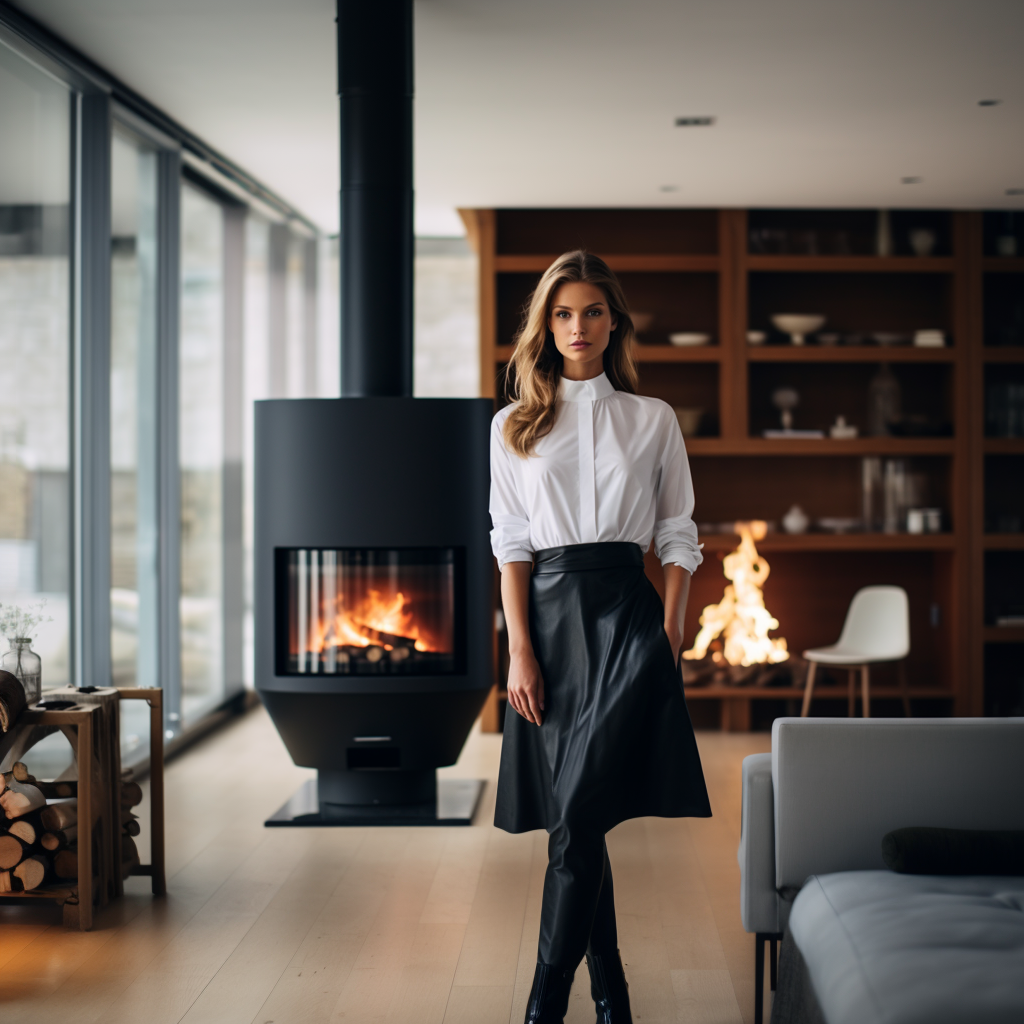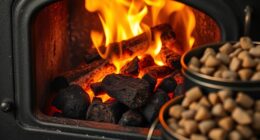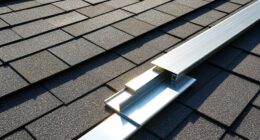As someone who loves wood stoves, I understand that dialing in the perfect temperature for your stove is like finding the sweet spot on a control knob.
But have you ever wondered how hot is too hot for a wood stove?
In this article, we will explore the optimal temperature range for wood stoves, the dangers of overheating, and how to maintain a safe temperature.
So, let’s dive in and make sure your wood stove is always burning bright without burning out.
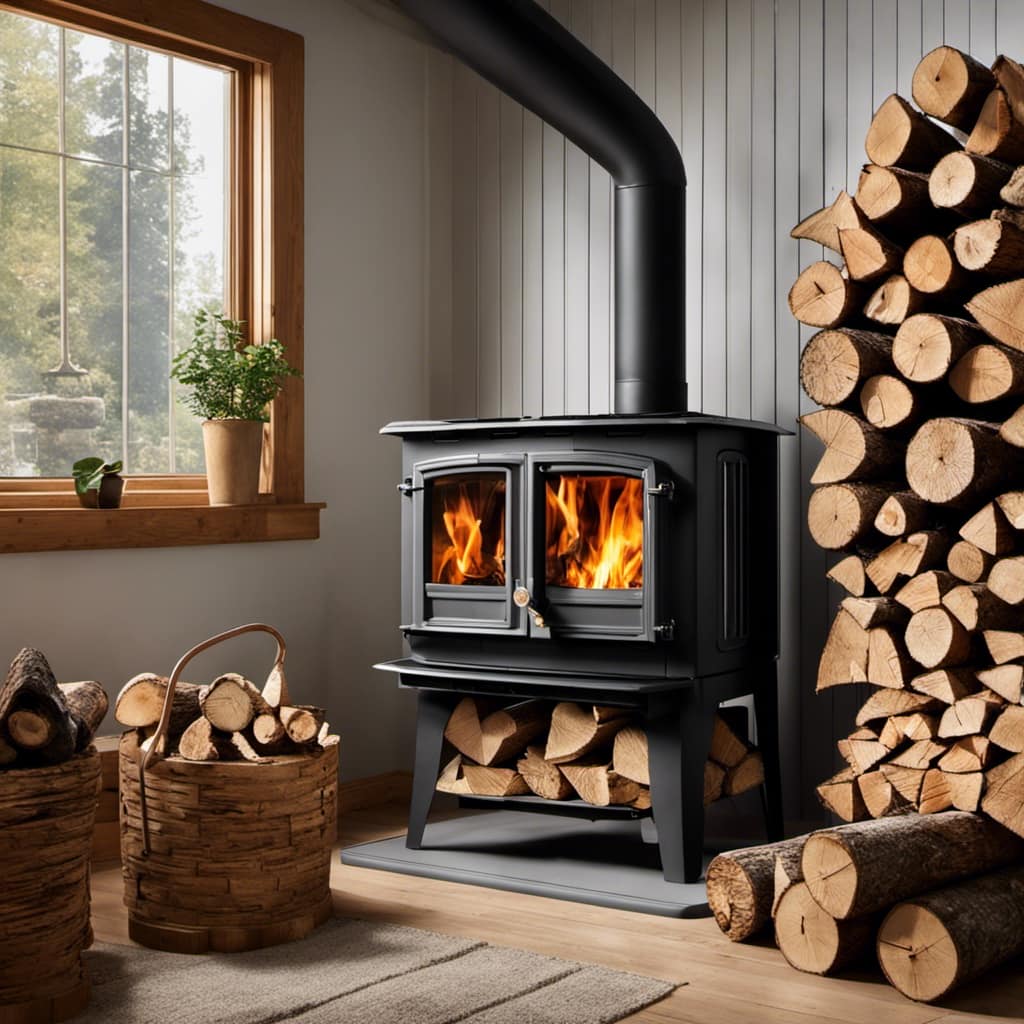
Key Takeaways
- The optimal temperature range for wood stoves is between 400 and 600 degrees Fahrenheit.
- Maintaining proper ventilation and airflow is crucial to prevent overheating.
- Regular cleaning and maintenance of the stove, chimney, and flue prevent creosote buildup and ensure safe operation.
- Monitoring the temperature using a stove thermometer and adjusting air vents help prevent overheating.
The Optimal Temperature Range for Wood Stoves
I find the optimal temperature range for wood stoves to be between 400 and 600 degrees Fahrenheit. Maintaining this temperature range is crucial for efficient and safe operation of the wood stove.
To achieve this, proper wood stove maintenance is essential. Regular cleaning of the stove, including the chimney and flue, ensures proper airflow and prevents the build-up of creosote, which can lead to dangerous chimney fires.
Additionally, understanding how to regulate the heat produced by the wood stove is important. This can be done by adjusting the dampers and air vents to control the amount of oxygen supplied to the fire. Too low of a temperature can result in incomplete combustion, leading to the production of harmful gases, while too high of a temperature can damage the stove and surrounding materials.
Therefore, it’s important to find the right balance and maintain the optimal temperature range for safe and efficient wood stove operation. Understanding the dangers of overheating is crucial in ensuring the longevity and safety of your wood stove.
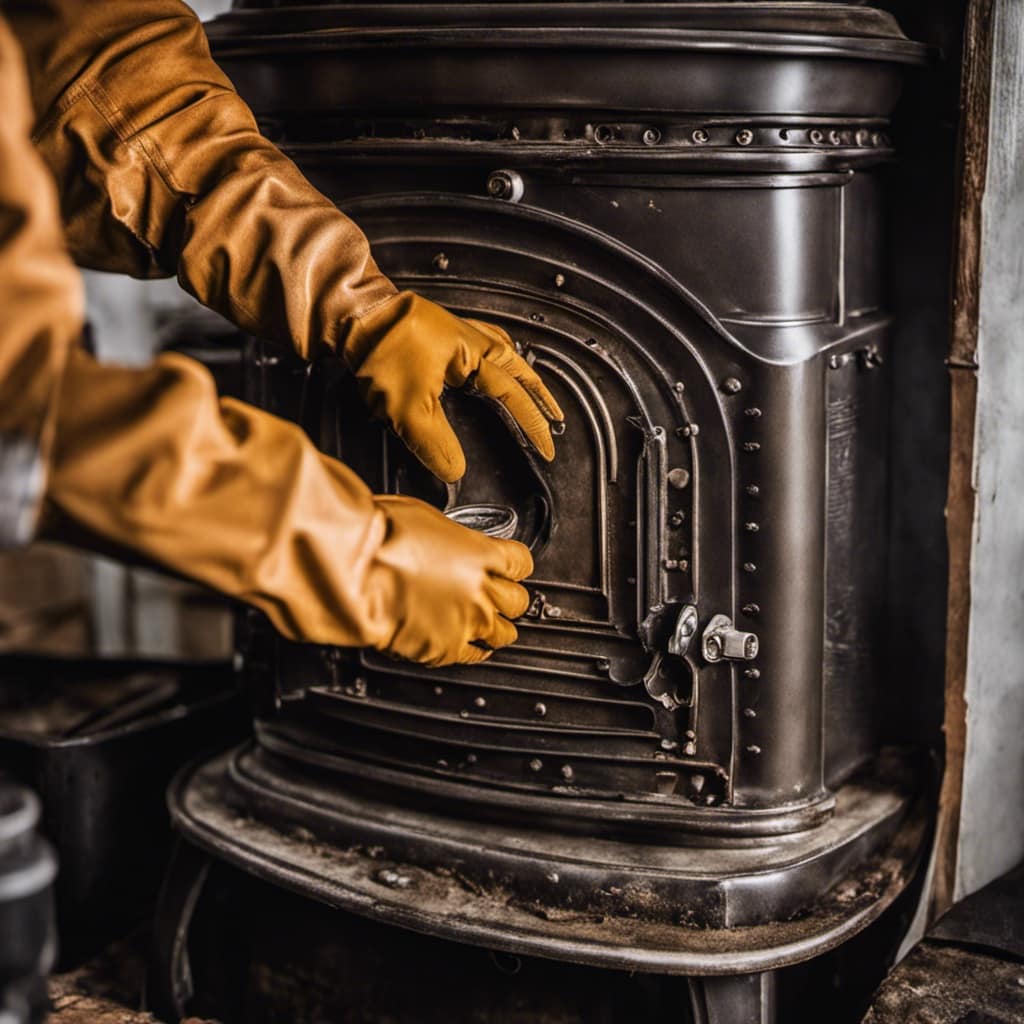
Understanding the Dangers of Overheating
As an experienced user, I’ve come to understand the risks associated with excessive heating. When it comes to wood stoves, proper ventilation is of utmost importance. Without adequate airflow, the heat generated by the stove can build up to dangerous levels, posing a risk of overheating. Insulation plays a crucial role in preventing this overheating by helping to regulate the temperature and maintain a safe environment.
Here are three key points to consider:
Proper ventilation ensures the removal of smoke, gases, and excess heat, preventing the stove and surrounding area from becoming too hot.
Insulation helps to retain heat within the stove, allowing for efficient combustion without causing excessive heat buildup in the room.
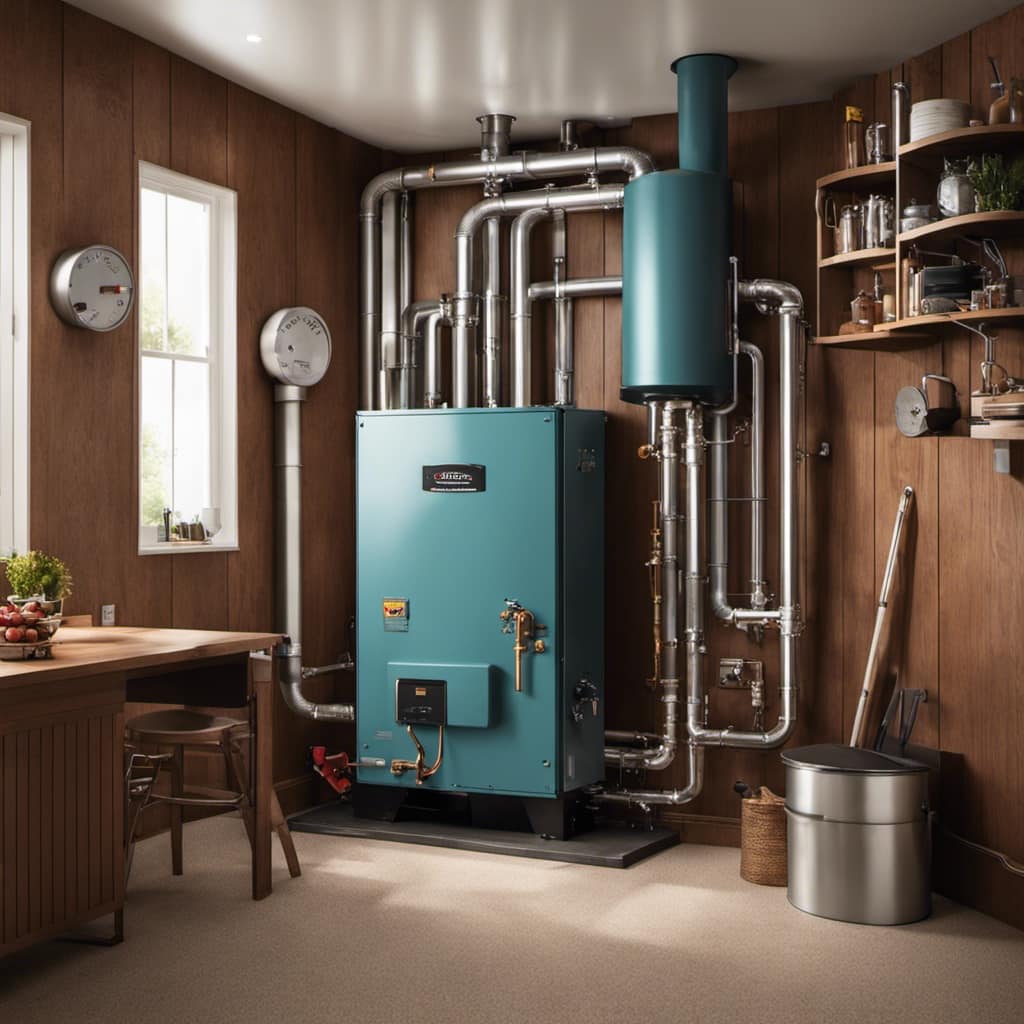
Inadequate ventilation or insulation can lead to overheating, which can damage the stove, surrounding materials, and pose a fire hazard.
Signs of an Overheated Wood Stove
Excessive heat emanating from the stove can indicate that the wood stove is overheating. This is a common problem that can occur for various reasons. Understanding the signs of an overheated wood stove is essential for troubleshooting and preventing potential dangers. Here are some common causes and troubleshooting techniques to help you address this issue:
| Common Causes | Troubleshooting Techniques |
|---|---|
| Restricted airflow | Check the air vents and ensure they are open and clean. |
| Damaged or worn-out gaskets | Replace the gaskets to ensure proper sealing. |
| Incorrect fuel type or size | Use only recommended fuel and ensure it is properly sized. |
| Improper stove installation | Consult a professional to ensure proper installation. |
| Insufficient clearance to combustible materials | Ensure proper clearance is maintained around the stove. |
How to Maintain a Safe Temperature for Your Wood Stove
Maintaining a safe temperature for my wood stove is vital for ensuring its proper functioning and preventing potential hazards. Here are some key points to consider in order to achieve this:
Proper Airflow: Maintaining proper airflow is crucial for controlling the temperature of the wood stove. A well-ventilated stove allows for efficient combustion and helps prevent overheating.
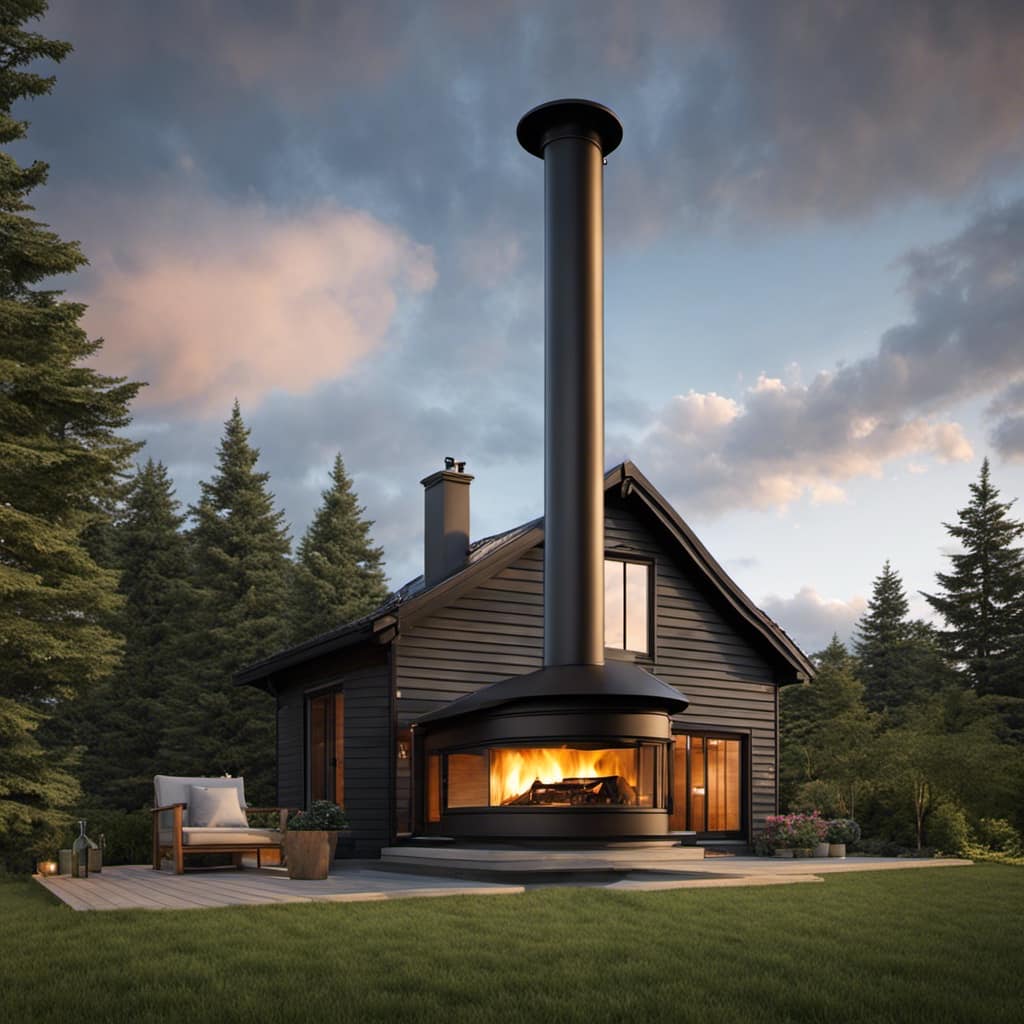
Regular Maintenance: Regular maintenance is essential to keep the wood stove in optimal condition. This includes cleaning the stovepipe and chimney to prevent blockages, inspecting the gaskets and seals for any signs of wear, and ensuring that the air vents are functioning properly.
Using Thermometers: Installing a stove thermometer can help monitor the temperature and prevent it from reaching dangerous levels. This allows for adjustments to be made to the airflow or fuel supply as needed.
Tips for Preventing Overheating in Your Wood Stove
I can prevent overheating in my wood stove by ensuring proper airflow and regularly monitoring the temperature with a stove thermometer. Maintaining proper airflow is crucial for preventing the stove from getting too hot. I make sure that the air vents are clean and not blocked by any debris. This allows for proper combustion and prevents the stove from overheating. Additionally, I regularly check the stove thermometer to monitor the temperature inside the stove. This helps me ensure that the stove is operating within safe temperature limits. Regular maintenance is important to prevent overheating. I clean the stove regularly to remove any built-up creosote or soot, which can block airflow and cause the stove to overheat. By following these steps, I can maintain a safe temperature in my wood stove.
| Tips for Preventing Overheating | Importance of Regular Maintenance |
|---|---|
| Ensure proper airflow | Clean the stove regularly |
| Monitor temperature | Remove creosote and soot buildup |
| Prevent stove from overheating | Ensure safe and efficient use |
Is the Temperature of the Wood Stove Pipe a Good Indicator of How Hot is Too Hot for the Wood Stove?
The wood stove pipe temperature limits are crucial in maintaining a safe environment when using a wood stove. Monitoring the temperature of the wood stove pipe is a good indicator of how hot is too hot for the wood stove. Exceeding the temperature limits can lead to dangerous situations like chimney fires.
Frequently Asked Questions
What Are the Potential Dangers of Using a Wood Stove That Is Too Hot?
Using a wood stove that is too hot can pose potential health risks and negatively impact indoor air quality. It’s important to maintain proper temperature levels to prevent overheating and ensure a safe and comfortable environment.
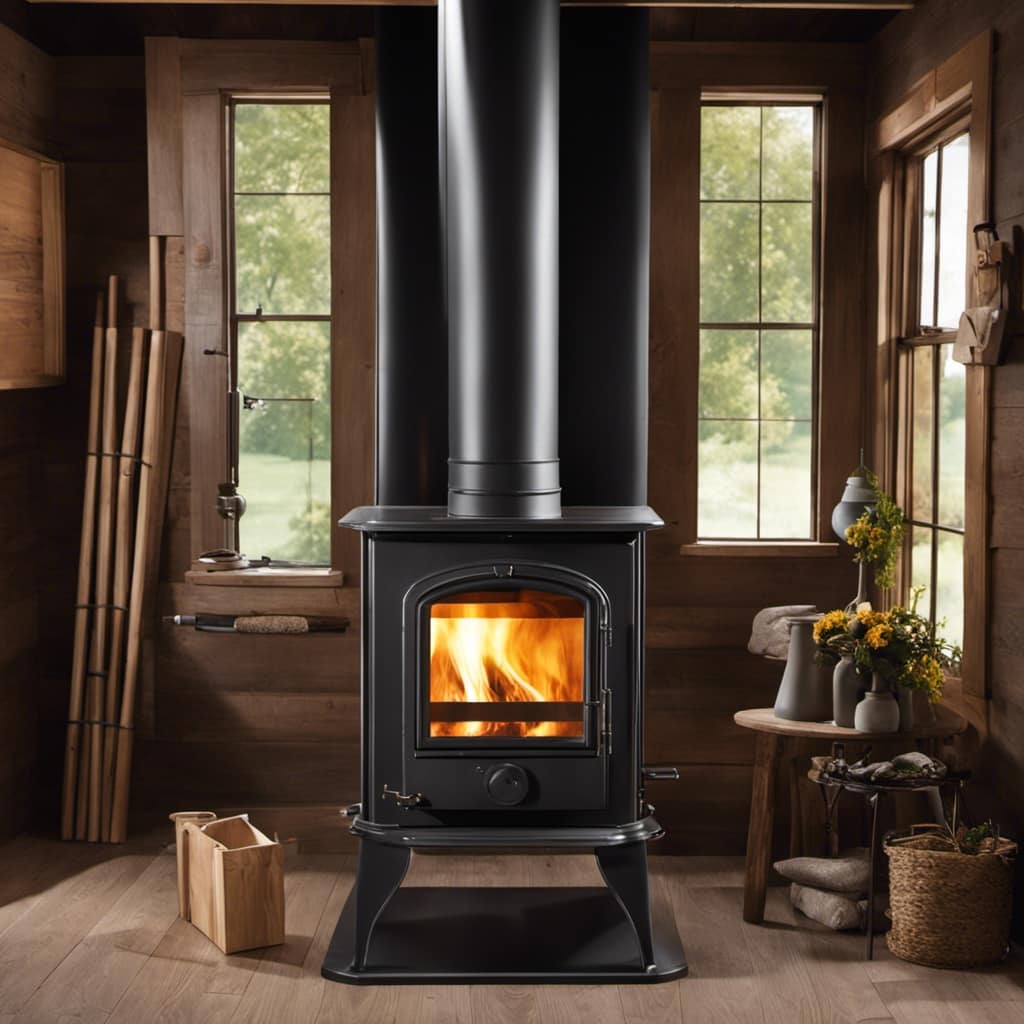
Can Overheating a Wood Stove Cause Damage to the Surrounding Walls or Flooring?
Overheating a wood stove can lead to potential damages such as cracking or warping of the surrounding walls or flooring. Additionally, it poses fire hazards. It’s important to monitor the stove’s temperature to prevent these issues.
Is It Possible to Regulate the Temperature of a Wood Stove to Prevent Overheating?
To regulate the temperature of a wood stove and prevent overheating, I control the heat output by adjusting the air vents and using the damper. This ensures a safe and comfortable level of warmth in my home.
Are There Any Safety Features or Accessories Available to Help Prevent Wood Stove Overheating?
Safety accessories and temperature control are crucial when it comes to preventing wood stove overheating. There are several options available, such as heat shields, stove thermometers, and automatic damper controls, that can help maintain a safe temperature.
What Are the Consequences of Consistently Using a Wood Stove at Temperatures Exceeding the Recommended Range?
Consistently using a wood stove at temperatures exceeding the recommended range can have serious consequences. It can lead to overheating, which can cause damage to the stove, increase the risk of fires, and potentially harm your health. Properly maintaining the temperature is crucial.
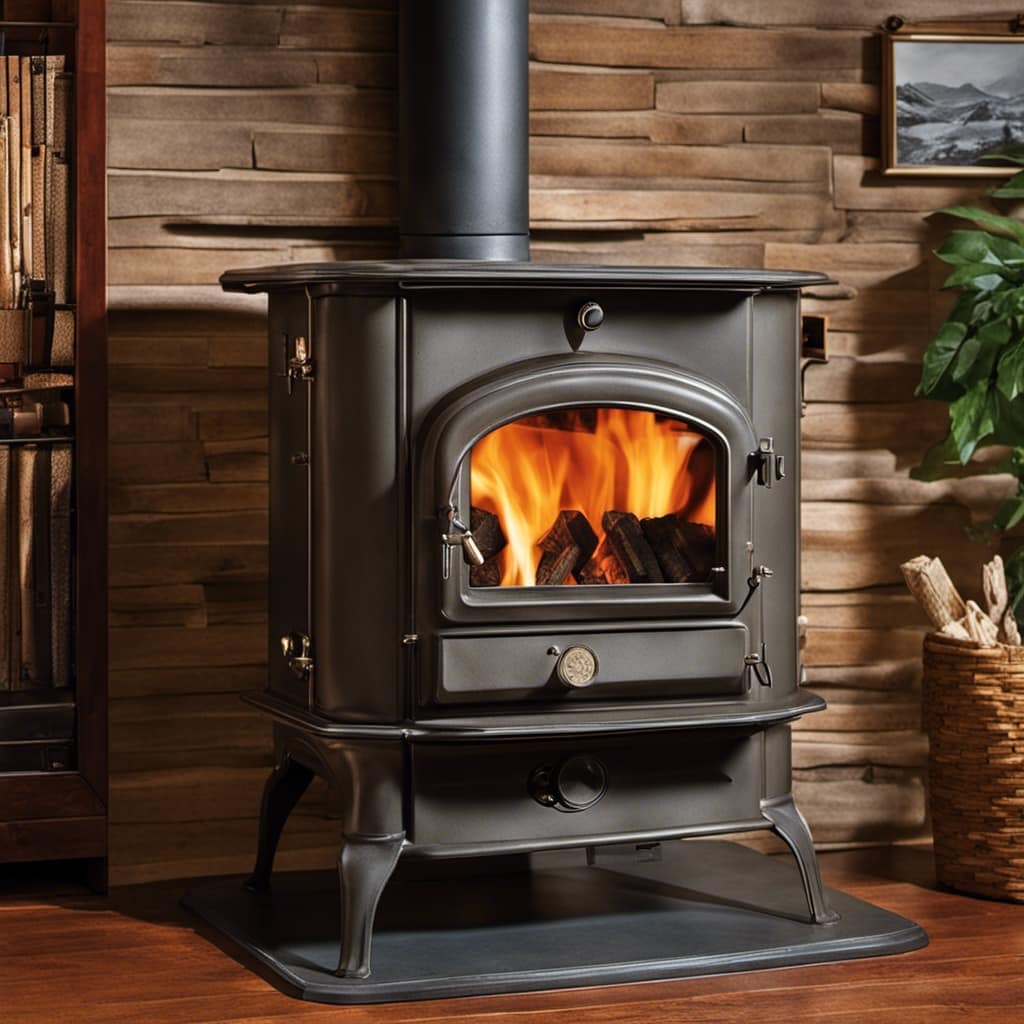
Conclusion
In conclusion, it’s crucial to ensure that your wood stove operates within the optimal temperature range to prevent overheating. Going beyond this range can pose serious dangers, such as the risk of fire or damage to the stove.
By recognizing the signs of an overheated wood stove and implementing proper maintenance techniques, you can maintain a safe temperature for your stove. Remember, it’s better to be safe than sorry and keep your wood stove ‘cool as a cucumber’ to avoid any mishaps.
Growing up surrounded by the vast beauty of nature, Sierra was always drawn to the call of the wild. While others sought the comfort of the familiar, she ventured out, embracing the unpredictable and finding stories in the heartbeat of nature.
At the epicenter of every remarkable venture lies a dynamic team—a fusion of diverse talents, visions, and passions. The essence of Best Small Wood Stoves is crafted and refined by such a trio: Sierra, Logan, and Terra. Their collective expertise has transformed the platform into a leading authority on small wood stoves, radiating warmth and knowledge in equal measure.



